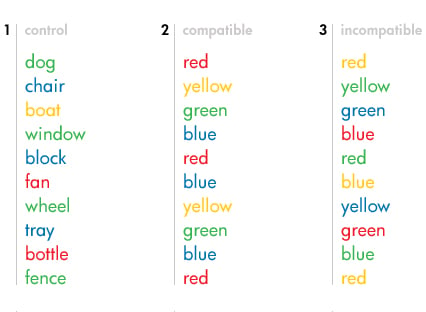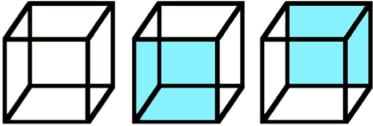Take-home Messages
- Top-down processing is perceiving the world around us by drawing from what we already know to interpret new information (Gregory, 1970).
- Top-down theories are hypotheses-driven and stress the importance of higher mental processes such as expectations, beliefs, values, and social influences.
- Throughout our lifetime, we construct schemas, which consist of past experiences, prior knowledge, emotions, and expectations, and then use these schemas to form hypotheses upon the arrival of new information.
- Gregory’s theory argues that because of the ceaseless stream of stimuli that we are required to process every day, equally attending to each sensation would be entirely too demanding and overwhelm us as individuals.
- In other words, using our senses to perceive incoming information is not enough, and using prior knowledge and experiences is necessary to hypothesize the meanings of new information.
What is Top-Down Processing?
Top-down processing in psychology refers to perception guided by prior knowledge, experiences, and expectations, influencing the interpretation of sensory information.
Top-down processing involves the brain “sending down” stored information to the sensory system as it receives information from the stimulus, enabling a plausible hypothesis to be made without the need to analyze every feature of the stimulus.
Thus, top-down processing uses the contextual information of things that we already know or have already experienced in combination with our senses to perceive new information.
In top-down information processing, perceptions are interpreted from individual frameworks that help us perceive and interpret information.
These frameworks, also known as schemas, are constructed from past experiences, prior knowledge, emotions, and expectations (Piaget, 1953).
Why we use Top-Down Processing
British psychologist Richard Gregory (1970) proposed that the process of perception is constructive and is dependent upon top-down processing in order to interpret new information.
He argued that the use of sensory information alone is an insufficient form of perceptual processing as the majority of information (over 90%) is lost between the time new stimuli reach the eye and arrive in the brain, requiring the use of contextual information from prior knowledge and experiences to perceive information properly.
Gregory’s Theory states that we use our existing knowledge and recollection of past experiences in order to form specific hypotheses about the meanings of new information.
Instead of exhausting vast amounts of energy to perceive each sensation individually, Gregory’s theory argues that we combine using our senses to interpret new incoming stimuli with previous knowledge and past experiences to find meaning.
Influences
According to Gregory (1970) different factors can influence top-down processing such as expectations, emotion, motivation and culture. This is known as perceptual set theory .
Context / Experience / Culture
The context or situation in which we have previously perceived information can influence future expectations when receiving new information under similar circumstances.
To no surprise, previous experiences undoubtedly influence how new information is perceived, as we, as humans, use the knowledge that we gained from prior events to construct expectations for perceiving new information.
The external world shapes our brains, and through context and experience, our perception is also shaped by the external world.
For this reason, the influence of culture on shaping our perceptions cannot be ignored, as culture creates differences in contexts and experiences that individuals draw from when perceiving new information (Deregowski, 1972).
Motivation
Motivation can also influence top-down processing as you may be more motivated to perceive things depending on your needs and desires (Swets, 1964).
For example, let’s say you are waiting for a phone call that determines whether or not you were chosen for a recent position that you have interviewed for, and you hear the phone ring when you are taking a shower when in fact, the phone never rang.
This is a perfect example of how motivation can influence perception because your need and desire for the phone to ring with that very important call are so strong that you imagine hearing the phone ring when it is not, in fact, ringing at all.
Examples
You can understand how top-down processing works by considering examples of this phenomenon in action.
Typos
The human mind does not read every letter individually but rather words collectively. As long as the first and last letters of the word are in the same spot, we can identify the correct word, despite the typo.
Goldstein (2018) argues that our ability to make sense of typos and misspellings is another example of top-down processing because we actively apply our previous experiences, knowledge, and expectations to identify misspelled words correctly!
Stroop Effect
The Stroop effect, named after the American psychologist John Ridley Stroop (1935), conveys how interference affects reaction time.
For example, imagine that you are given a list of colors, but the word and the color of the words presented on the list do not match. After studying the list of colors, you are asked to say the color of the words on the list but not the color of the word itself.

Although this seemed easy at first, Stroop discovered that participants could easily identify the color of the presented word if it matched its semantic meaning.
When the color did not match the word’s semantic meaning, it required participants to pay more attention to the task at hand.
Visual Illusions
The Necker Cube is a visual illusion of an ambiguous figure created by Louis Albert Necker (1832). The cube maintains perceptual ambiguity through its wireframe design, allowing its viewer to interpret it as having two different front squares: an upper-right square or a lower-left square.

According to Gregory, viewers can easily change between the two orientations because the brain has created two separate hypotheses, both having an equal possibility of being true.
Because of their equal plausibility, the brain cannot decide which hypothesis is true and is able to flip between visual orientations of the cube continually.
This is an example of top-down processing because the sensory input of information has not changed since the viewer initially saw the cube. What has changed is their perception of the cube, concluding that the perception of information is flowing from top to bottom, not bottom to top.
Auditory Illusions
Phonemic Restoration is an auditory illusion that occurs when we hear parts of words that are not really there.
The term for this phenomenon was coined by Richard Warren (1970), where he sought to explain how background noises that seemingly cover particular phonemes within a verbal conversation, humanity is still able to understand individual phonemes.
To put it simply, Warren sought to discover how people could understand verbal communication in spite of noises that covered up parts of the words being communicated.
Imagine you are asked to listen to a sentence and then write what you heard verbatim. However, during the sentence, the speaker coughs at the beginning of one of the words, eliminating some phonemes.
The illusion of Phonemic Restoration argues that despite the speaker’s cough, the listener would be able to write down the missing phonemes.
For example, Warren found that when he presented the sentence, “It was found that the wheel was on the axle.”, and replaced the phonemes wh- with a cough, every participant still wrote down the word wheel, despite the missing wh- phonemes.
This is an example of top-down processing as participants use previous knowledge, experiences, and expectations to identify the word despite its missing phonemes correctly.
Bayesian Approach
By now, it is clear that human perception does not function in isolation. One cannot rely solely on one’s senses or previous knowledge and experiences to accurately interpret new stimuli.
Rather, Kersten et al. (2004) argue that human perception is a combination of using both our senses and previous knowledge and experiences to interpret new stimuli.
The combination of top-down and bottom-up processing is referred to as the Bayesian Approach. Bayesian’s Theory states that interpreting the ambiguity of the external world requires an optimal decision strategy that allows us with the most feasible state of the world.
This approach argues that this perceptual decision is a careful balance of the reliability of current sensory stimuli and the likelihood of prior stimuli.
We can see the Bayesian Approach in action when we create scenes and objects that are within our visual field. According to the Bayesian Approach, our environment consists of probable structures, and scene properties such as an object’s shape, light, and illumination are no more than statistical regularities (Kersten et al., 2004).
This statistical regularity allows the brain to perceive more than just the current sensory input but in addition to prior information to create scenes and objects within our visual field.
For example, when our brain attempts to distinguish shapes from shading patterns, our prior knowledge corrects this ambiguity in structure.
Simply put, the Bayesian Approach states that we can take ambiguous shaded patterns and interpret them as shapes because we have seen a shape similar to the one in front of us before.
Our visual systems use the statistical regularities of an object’s shape, light, and illumination to interpret probable conclusions from new information (Kersten et al., 2004).
We combine probabilities of prior experience with current sensory stimuli to make sense of what we perceive.
References
Deregowski, J. B., Muldrow, E. S. & Muldrow, W. F. (1972). Pictorial recognition in a remote Ethiopian population. Perception, 1, 417-425.
Goldstein, E. B. (2018). Cognitive psychology. Mason OH: Cengage.
Gregory, R. (1970). The intelligent eye. London: Weidenfeld and Nicolson.
Kersten, D., Mamassian, P., & Yuille, A. (2004). Object perception as Bayesian inference. Annu. Rev. Psychol., 55, 271-304.
Necker, L. (1832). LXI. Observations on some remarkable optical phenomena seen in Switzerland; and on an optical phenomenon which occurs on viewing a figure of a crystal or geometrical solid. The London and Edinburgh Philosophical Magazine and Journal of Science, 1 (5), 329-337.
Piaget, J. (1953). The origin of intelligence in the child (International library of psychology, philosophy, and scientific method) . London: Routledge & Paul.
Stroop, J.R. (1935). Studies of interference in serial verbal reactions. Journal of Experimental Psychology, 18, 643–662.
Swets, J. (1964). Signal detection and recognition by human observers; contemporary readings. New York: Wiley.
Warren, R. M. (1970). Perceptual Restoration of Missing Speech Sounds. Science, 167(3917), 392-393.


